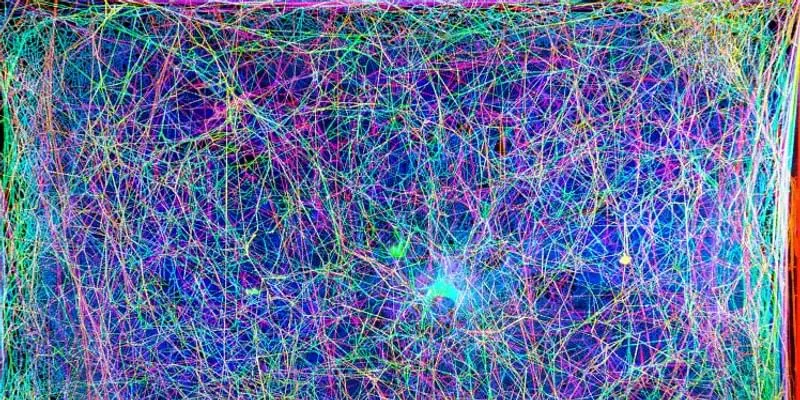Scientists spin music out of spider webs...you can listen too
A group of scientists at the Massachusetts Institute of Technology has converted the structure of the web into frequencies to play music
Spider webs are some of the most complex natural structures and form an intricate network of 3D structures that they use to hunt and breed. A group of scientists at the Massachusetts Institute of Technology have now translated the structure of a web into music. They also claim that the structure could have applications ranging from better 3D printers to cross-species communication.

Cross-sectional images ( in different colours) of a spider web combined into a 3D image and translated into music. Credit: Isabelle Su and Markus Buehler
Speaking to the American Chemical Society,Markus Buehler, Ph.D. at MIT, the project’s principal investigator, who is presenting the work said, “Spiders don’t see very well, so they sense their world through vibrations, which have different frequencies.” These vibrations occur when a strand of the is stretched during construction, or when the wind or a trapped fly moves the web.
According to SciTech Daily, Buehler believes that study can help in the extraction of rhythms and melodies of non-human origin from natural materials. Buehler and his colleagues at MIT, are collaborating with Tomás Saraceno at Studio Tomás Saraceno to gain new insights into the 3D architecture and construction of webs.
Explaining how the music was extracted, Gulf News reported that the team scanned a natural spider web with a laser to capture 2D cross-sections and then used computer algorithms to reconstruct the web's 3D network. Different strands of the web were assigned different frequencies, thereby creating "notes" that were stitched together in the patterns based on the web's 3D structure.
The frequencies were assigned musical notes and researchers created a harp-like instrument which was used to play the spider web music at live performances, and a virtual reality setup that allows the listener to "enter" the web.
"The virtual reality environment is really intriguing. By hearing it and seeing it at the same time, you can really start to understand the environment the spider lives in," Buehler was quoted as telling the publication.
Edited by Diya Koshy George






